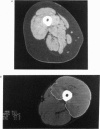Abstract
The maximum voluntary force (strength) which could be produced by the knee-extensor muscles, with the knee held at a right angle, was measured in a group of healthy young subjects comprising twenty-five males and twenty-five females. Both legs were tested: data from the stronger leg only for each subject were used in the present study. Computed tomography was used to obtain a cross-sectional image of the subjects' legs at mid-thigh level, measured as the mid-point between the greater trochanter and upper border of the patella. The cross-sectional area of the knee-extensor muscles was determined from the image obtained by computer-based planimetry. The subjects' height and weight were measured. An estimate of body fat content was obtained from measurements of skinfold thicknesses and used to calculate lean body mass. Male subjects were taller (P less than 0.001), heavier (P less than 0.001), leaner (P less than 0.001) and stronger (P less than 0.001) than the female subjects. No significant correlation was found to exist between strength of the knee-extensor muscles and body weight in the male or in the female subjects. In the male subjects, but not in the female group, there was a positive correlation (r = 0.50; P less than 0.01) between strength and lean body mass. Muscle cross-sectional area of the male subjects was greater than that of the female subjects (P less than 0.001). The ratio of strength to cross-sectional area for the male was 9.49 +/- 1.34 (mean +/- S.D.). This is greater but not significantly so, than that for females (8.92 +/- 1.11). In both male and female groups, there was a significant (P less than 0.01) positive correlation between muscle strength and cross-sectional area. A wide variation in the ratio of strength to muscle cross-sectional area was observed. This variability may be a result of anatomical differences between subjects or may result from differences in the proportions of different fibre types in the muscles. The variation between subjects is such that strength is not a useful predictive index of muscle cross-sectional area.
Full text
PDF
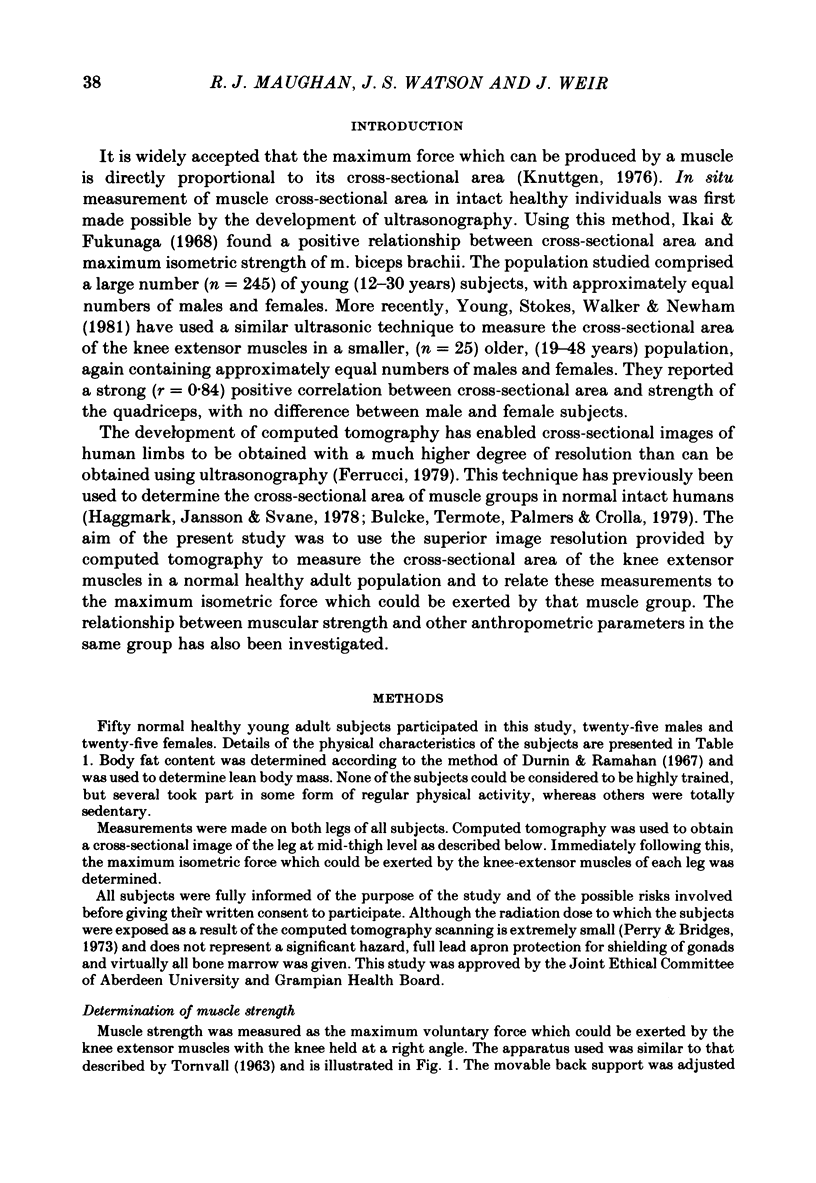
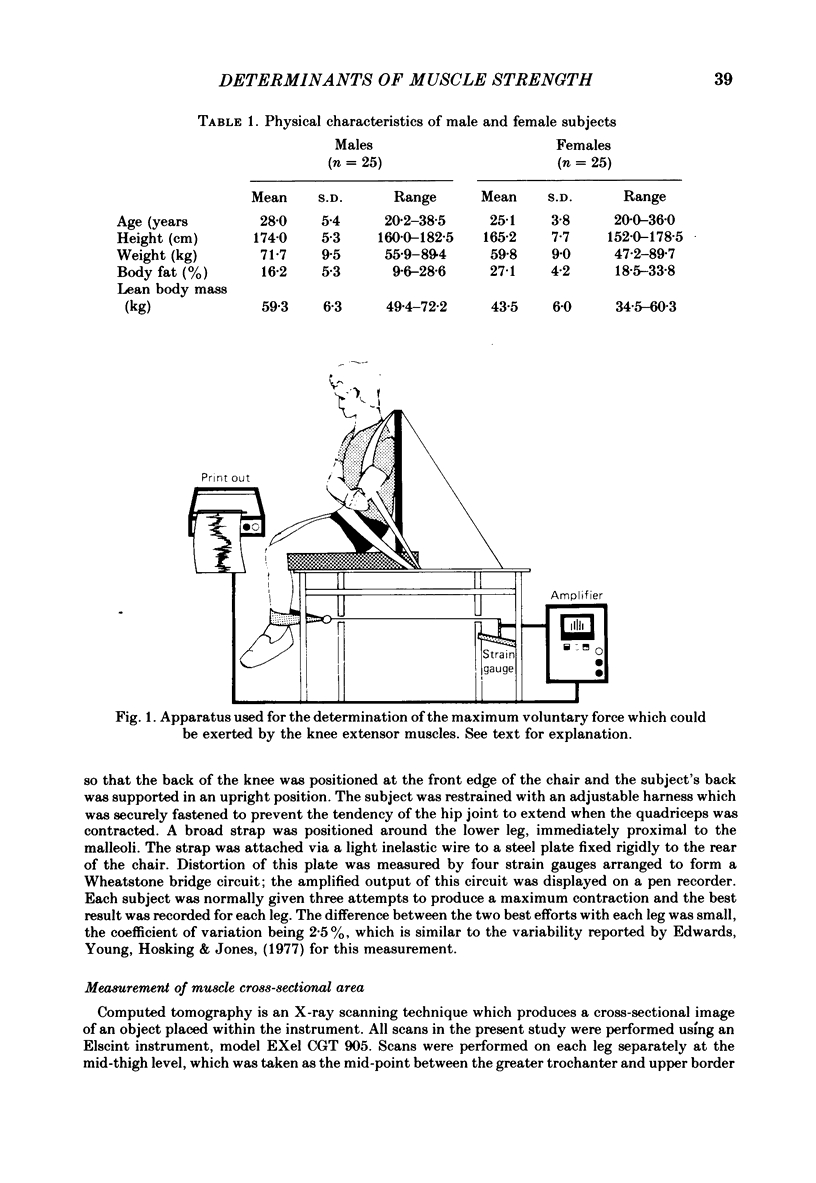
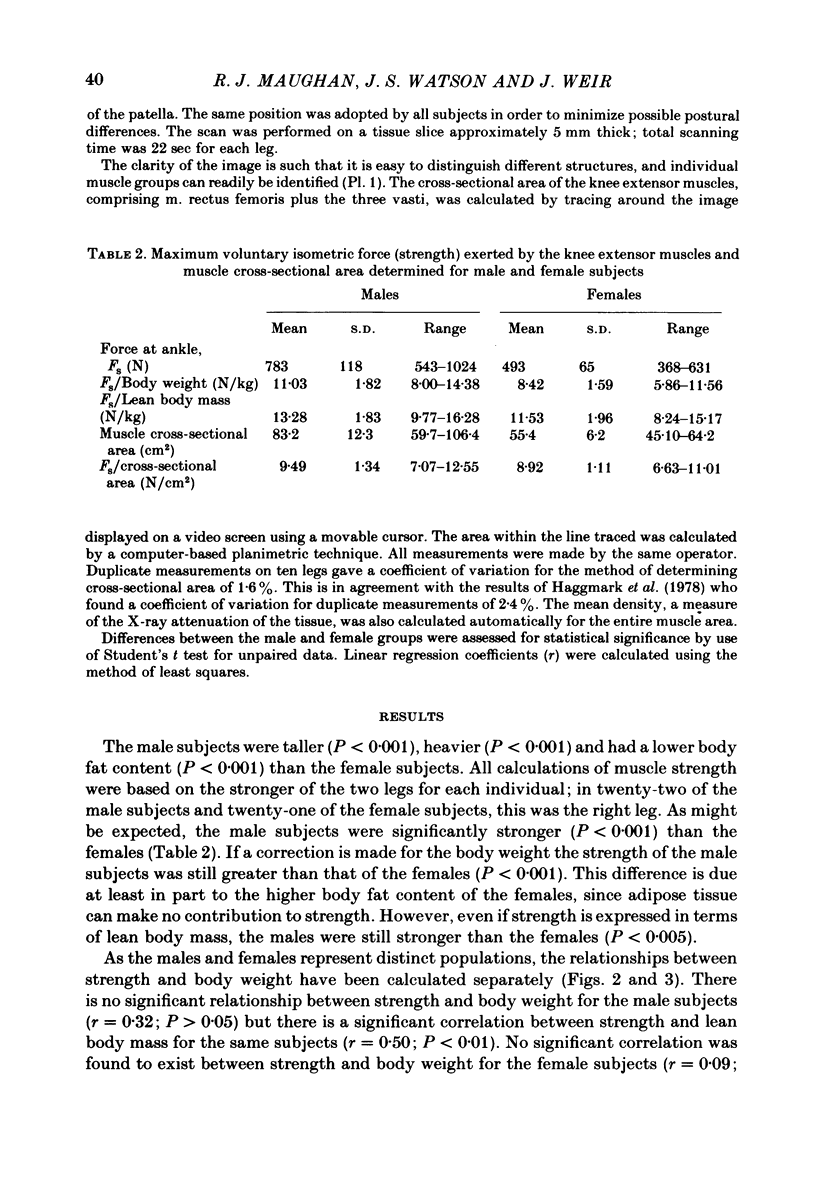
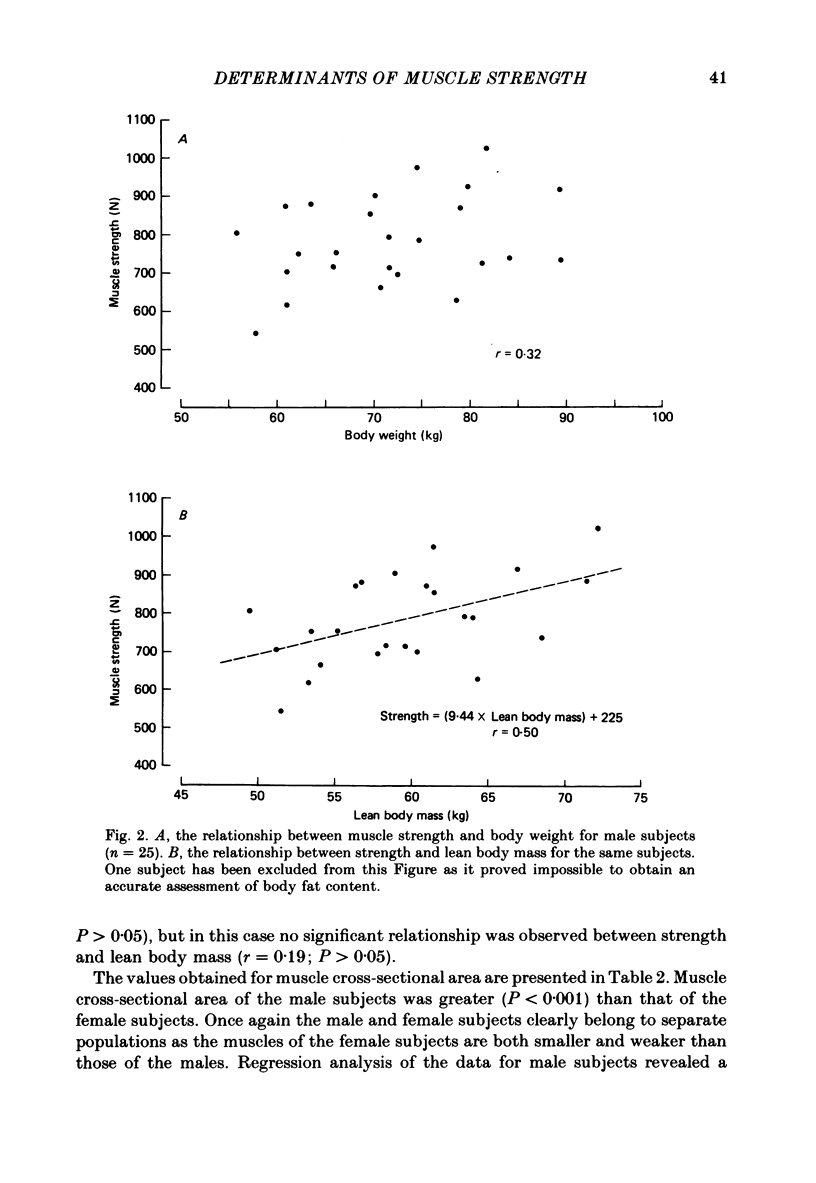
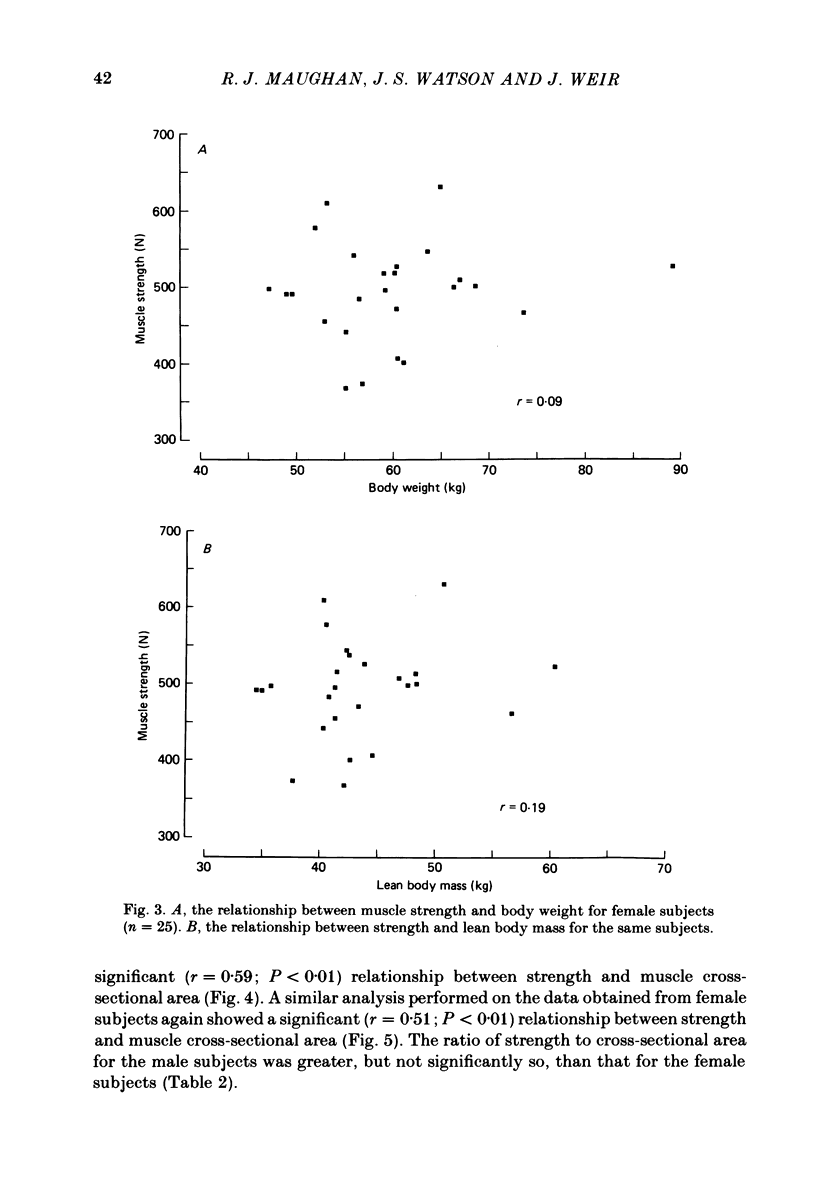
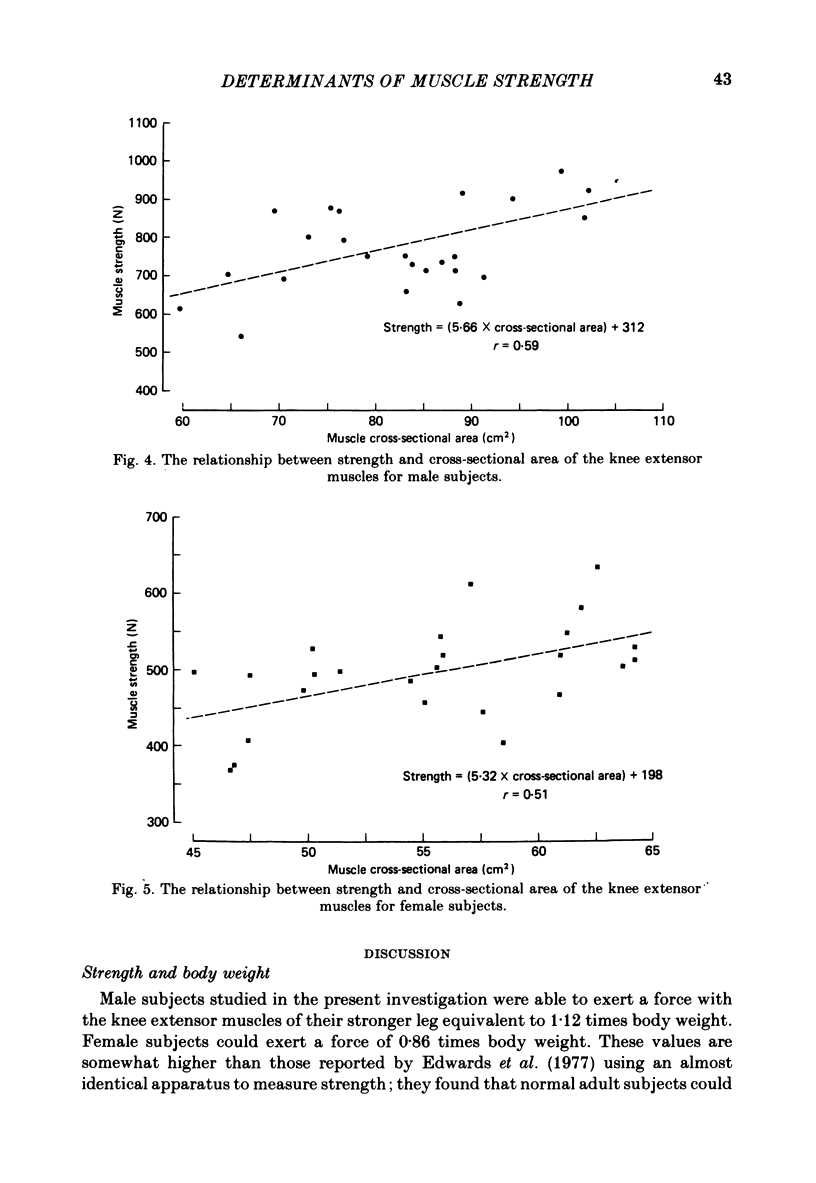
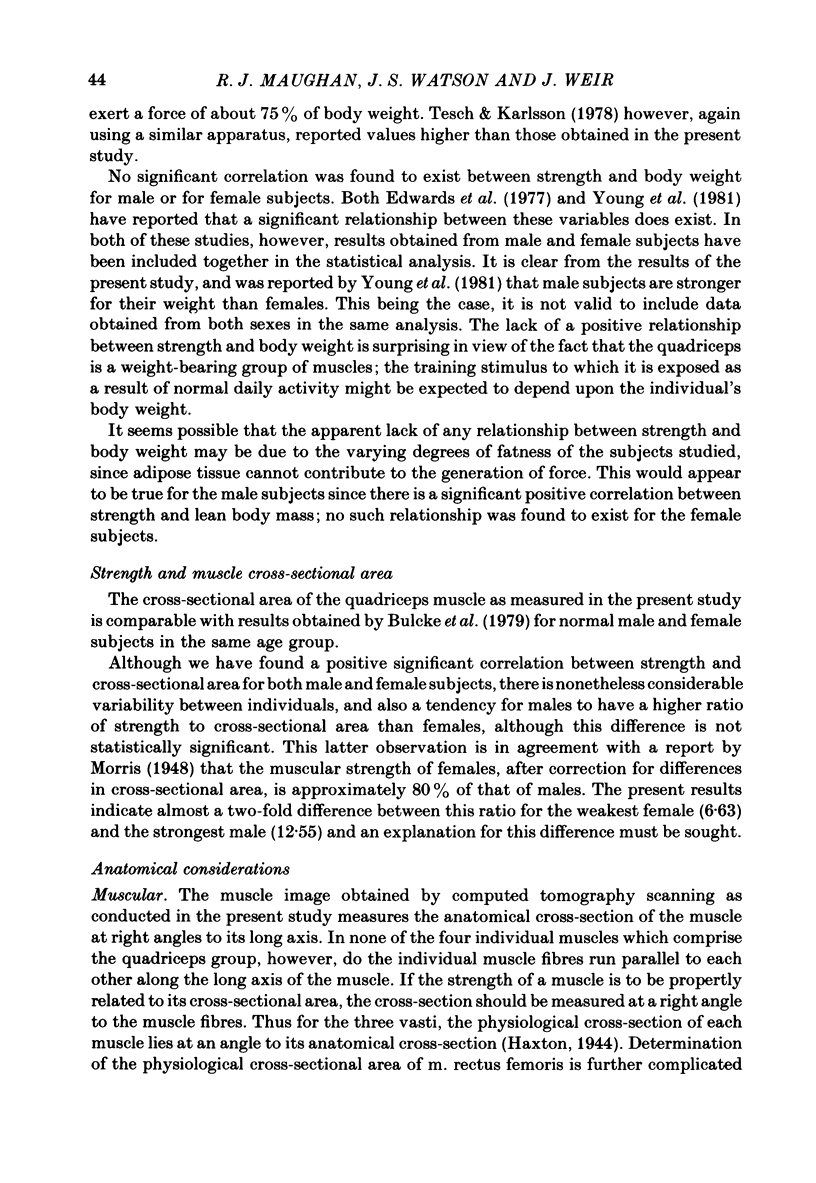
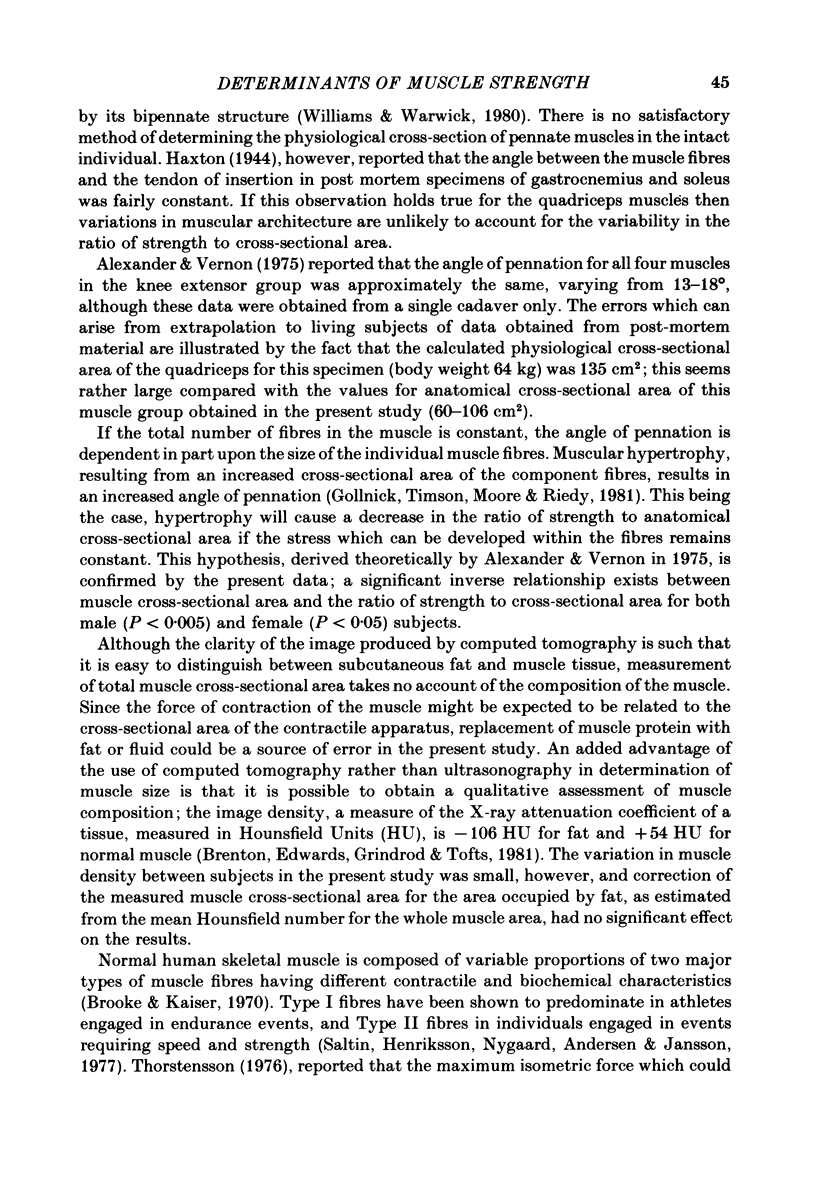
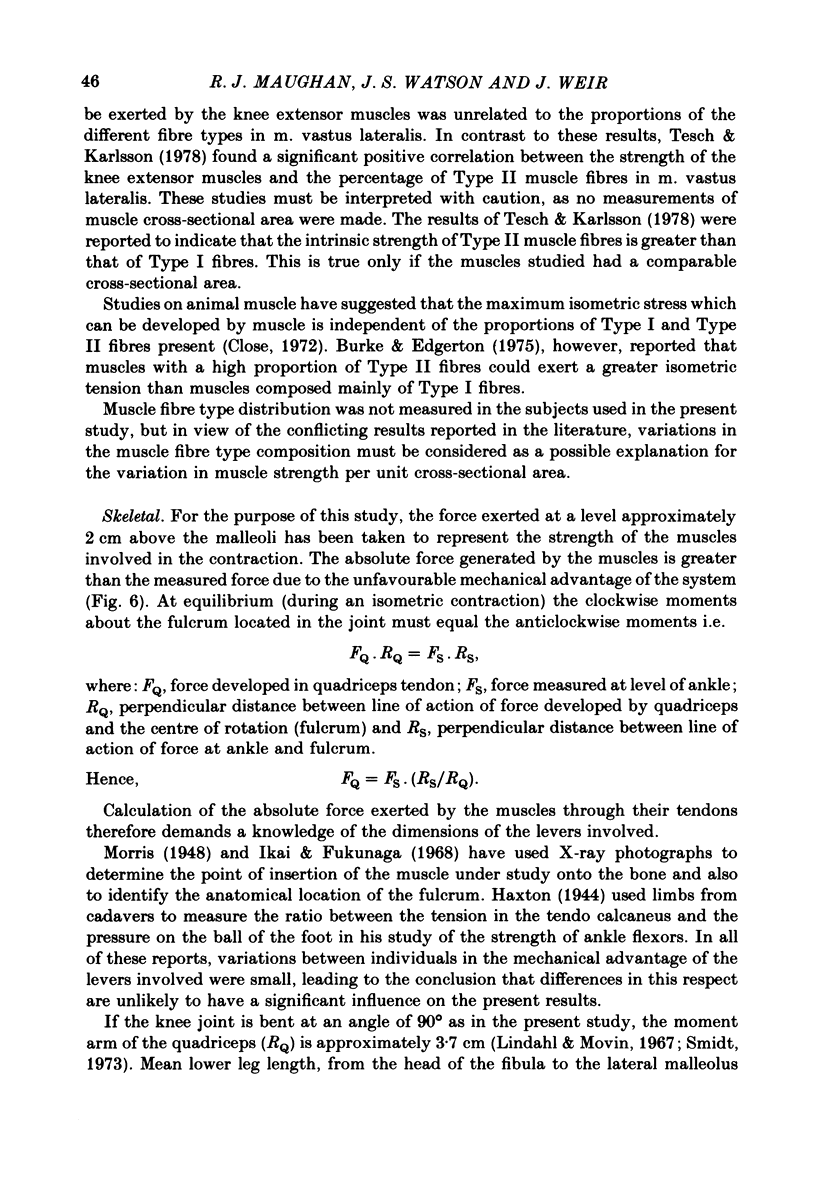
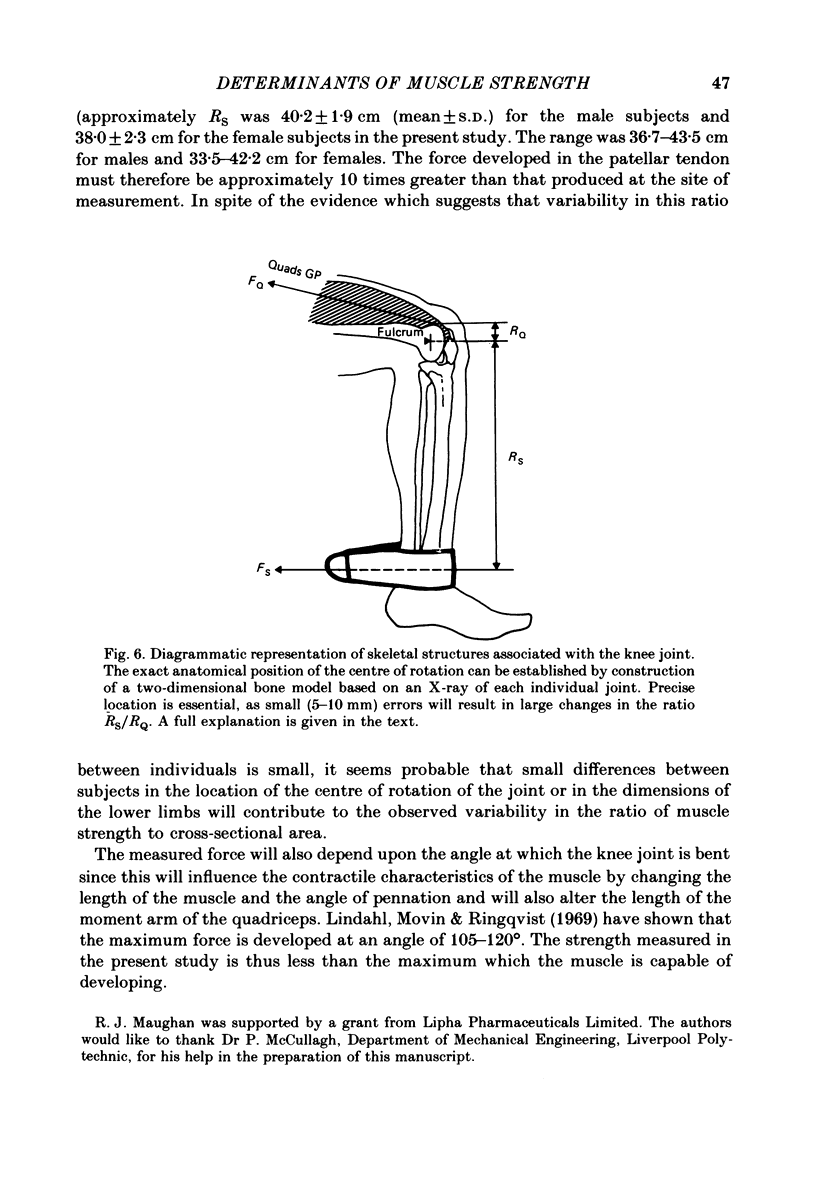
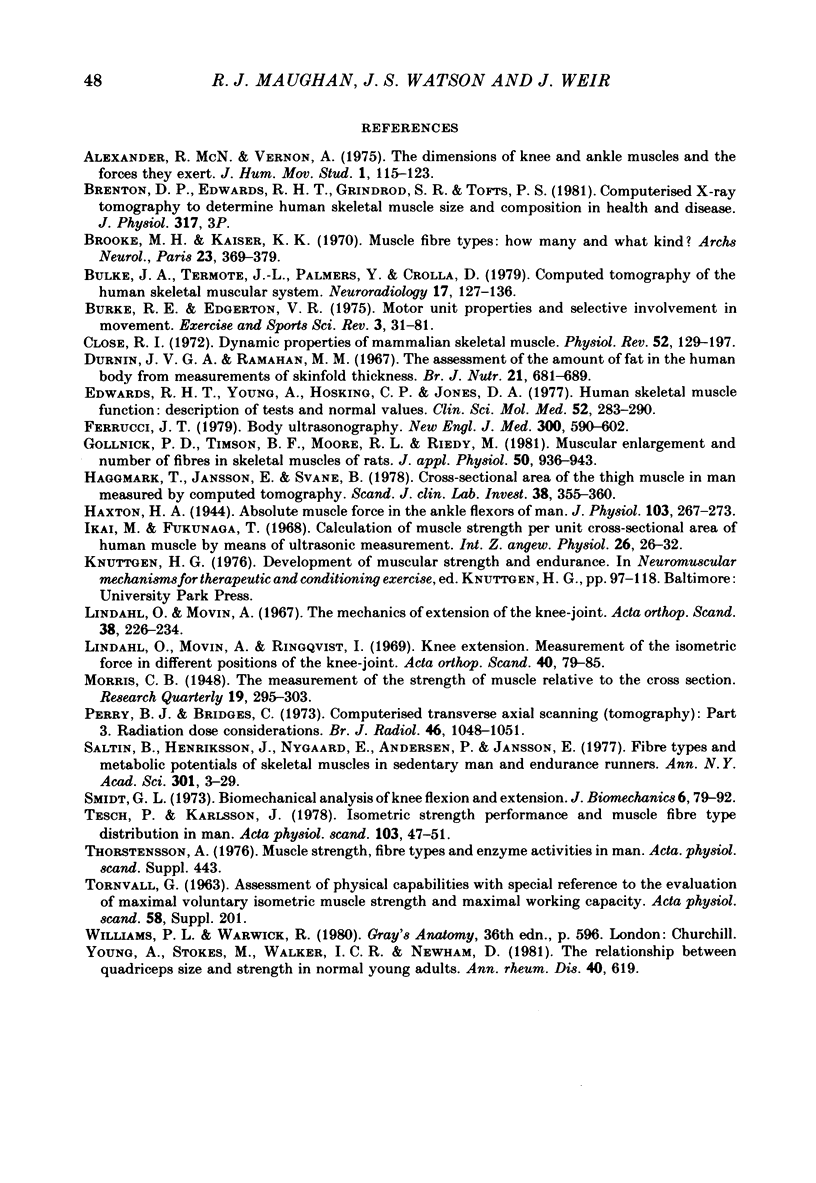
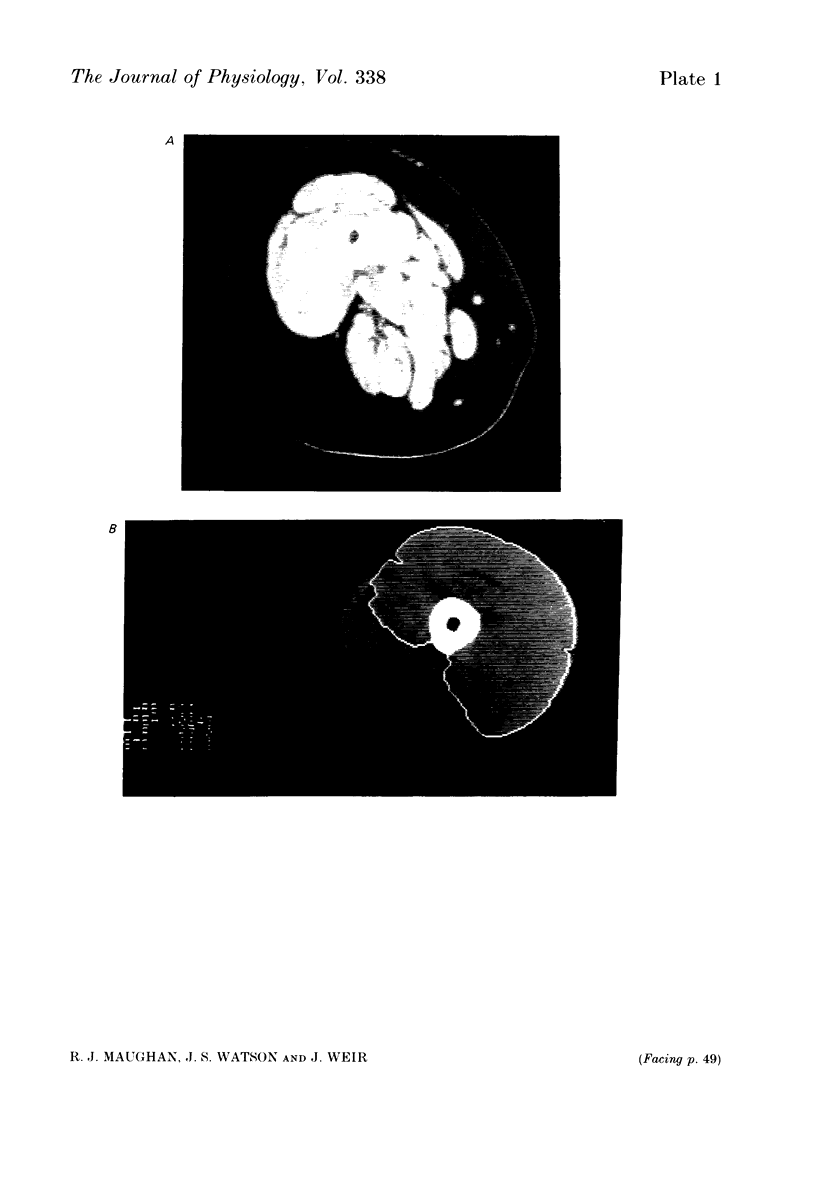
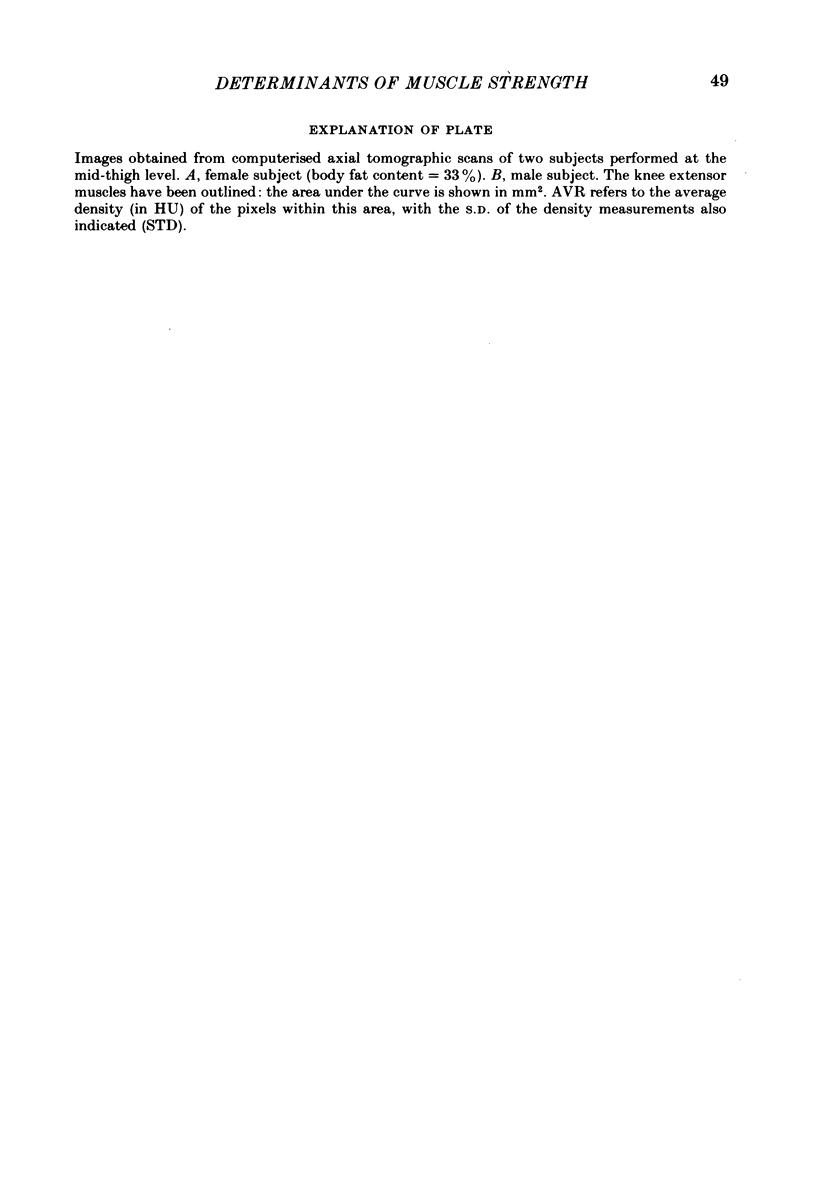
Images in this article
Selected References
These references are in PubMed. This may not be the complete list of references from this article.
- Alexander V., Leffingwell S. S., Lloyd J. W., Waxweiler R. J., Miller R. L. Brain cancer in petrochemical workers: a case series report. Am J Ind Med. 1980;1(1):115–123. doi: 10.1002/ajim.4700010113. [DOI] [PubMed] [Google Scholar]
- Brooke M. H., Kaiser K. K. Muscle fiber types: how many and what kind? Arch Neurol. 1970 Oct;23(4):369–379. doi: 10.1001/archneur.1970.00480280083010. [DOI] [PubMed] [Google Scholar]
- Bulcke J. A., Termote J. L., Palmers Y., Crolla D. Computed tomography of the human skeletal muscular system. Neuroradiology. 1979 Mar 23;17(3):127–136. doi: 10.1007/BF00339869. [DOI] [PubMed] [Google Scholar]
- Burke R. E. Motor unit properties and selective involvement in movement. Exerc Sport Sci Rev. 1975;3:31–81. [PubMed] [Google Scholar]
- Close R. I. Dynamic properties of mammalian skeletal muscles. Physiol Rev. 1972 Jan;52(1):129–197. doi: 10.1152/physrev.1972.52.1.129. [DOI] [PubMed] [Google Scholar]
- Durnin J. V., Rahaman M. M. The assessment of the amount of fat in the human body from measurements of skinfold thickness. Br J Nutr. 1967 Aug;21(3):681–689. doi: 10.1079/bjn19670070. [DOI] [PubMed] [Google Scholar]
- Edwards R. H., Young A., Hosking G. P., Jones D. A. Human skeletal muscle function: description of tests and normal values. Clin Sci Mol Med. 1977 Mar;52(3):283–290. doi: 10.1042/cs0520283. [DOI] [PubMed] [Google Scholar]
- Ferrucci J. T., Jr Body ultrasonography (second of two parts). N Engl J Med. 1979 Mar 15;300(11):590–602. doi: 10.1056/NEJM197903153001104. [DOI] [PubMed] [Google Scholar]
- Gollnick P. D., Timson B. F., Moore R. L., Riedy M. Muscular enlargement and number of fibers in skeletal muscles of rats. J Appl Physiol Respir Environ Exerc Physiol. 1981 May;50(5):936–943. doi: 10.1152/jappl.1981.50.5.936. [DOI] [PubMed] [Google Scholar]
- Haxton H. A. Absolute muscle force in the ankle flexors of man. J Physiol. 1944 Dec 15;103(3):267–273. doi: 10.1113/jphysiol.1944.sp004075. [DOI] [PMC free article] [PubMed] [Google Scholar]
- Häggmark T., Jansson E., Svane B. Cross-sectional area of the thigh muscle in man measured by computed tomography. Scand J Clin Lab Invest. 1978 Jun;38(4):355–360. doi: 10.3109/00365517809108434. [DOI] [PubMed] [Google Scholar]
- Ikai M., Fukunaga T. Calculation of muscle strength per unit cross-sectional area of human muscle by means of ultrasonic measurement. Int Z Angew Physiol. 1968;26(1):26–32. doi: 10.1007/BF00696087. [DOI] [PubMed] [Google Scholar]
- Lindahl O., Movin A., Ringqvist I. Knee extension. Measurement of the isometric force in different positions of the knee-joint. Acta Orthop Scand. 1969;40(1):79–85. doi: 10.3109/17453676908989487. [DOI] [PubMed] [Google Scholar]
- Lindahl O., Movin A. The mechanics of extension of the knee-joint. Acta Orthop Scand. 1967;38(2):226–234. doi: 10.3109/17453676708989636. [DOI] [PubMed] [Google Scholar]
- Perry B. J., Bridges C. Computerized transverse axial scanning (tomography). 3. Radiation dose considerations. Br J Radiol. 1973 Dec;46(552):1048–1051. doi: 10.1259/0007-1285-46-552-1048. [DOI] [PubMed] [Google Scholar]
- Saltin B., Henriksson J., Nygaard E., Andersen P., Jansson E. Fiber types and metabolic potentials of skeletal muscles in sedentary man and endurance runners. Ann N Y Acad Sci. 1977;301:3–29. doi: 10.1111/j.1749-6632.1977.tb38182.x. [DOI] [PubMed] [Google Scholar]
- Smidt G. L. Biomechanical analysis of knee flexion and extension. J Biomech. 1973 Jan;6(1):79–92. doi: 10.1016/0021-9290(73)90040-7. [DOI] [PubMed] [Google Scholar]
- Tesch P., Karlsson J. Isometric strength performance and muscle fibre type distribution in man. Acta Physiol Scand. 1978 May;103(1):47–51. doi: 10.1111/j.1748-1716.1978.tb06189.x. [DOI] [PubMed] [Google Scholar]



